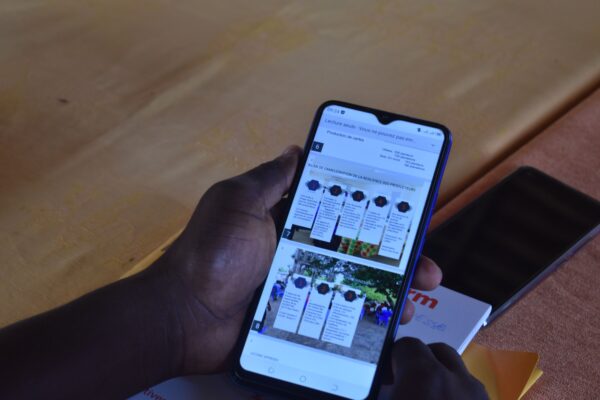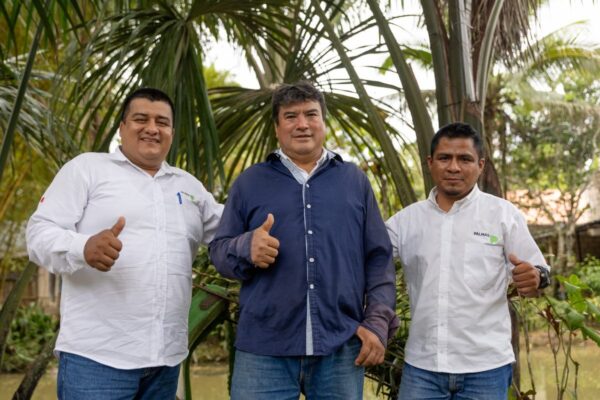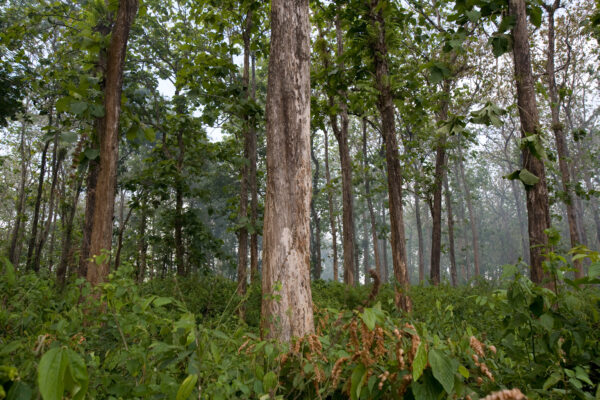This case study is part of Earthworm Foundation's awareness campaign on forests. Visit the campaign page and search #ForTheForests across social media platforms to learn more about the campaign.
How did palm end up playing such a huge role in Malaysia?
The oil palm tree – indigenous to West Africa – was first brought to Malaysia in 1870s as an ornamental plant. It soon became common along roads, government buildings and parks.
In Europe, the Industrial Revolution brought many entrepreneurs to the East, one of which was Frenchman Henri Fauconnier. In 1917, Fauconnier set up the first commercial oil palm estate in Batang Berjuntai, Selangor – in what was then the British colony of Malaya.
Since gaining independence in 1957, agriculture – rubber and palm oil in particular – has been a major part of the Malaysian government’s efforts to develop the nation and its rural poor.
Today, Malaysia is the world’s second largest producer of palm oil, producing 19.1 million tonnes – and exporting 17.7 million tonnes of this – in 2020.
Palm oil makes up the largest part of Malaysia’s agricultural sector, which contributed about $25 billion to the country’s GPD (Gross Domestic Product) in 2019. Oil palm plantations cover about 18 percent of land in Malaysia; directly employing 441,000 people, over half of whom are small growers.
But the development this wonder crop provided has come at a cost.
Deforestation and its inevitable link to palm oil
According to the Global Forest Watch, Malaysia lost 2.7 million hectares of primary forest between 2002 and 2020, which is a 17 percent decrease. This was primarily due to rapid development of roads and towns, as well as agriculture like palm.
Almost 30 percent of palm oil produced in Malaysia comes from the states of Johor and Pahang. These two states hold close to 40 percent of Malaysia’s permanent forest reserves. Since it is the most forested area in Malaysia, Pahang is also home to the largest population of Orang Asli – a major indigenous group in Malaysia.
In 2021, Earthworm initiated a landscape program in the Southern Central Forest Spine, a 1.6-million-hectare track of land running across Johor and Pahang.
“Our vision is to demonstrate the business case for balancing sustainable production, conservation and human rights,” said Kiah Hui Ooi, landscape coordinator for the project.
We have observed, through Starling satellite images, that 28,512 hectares of forested land was converted in the SCFS between 2016 to 2020, Kiah Hui said. The area is also home and workplace for about 50,000 migrant workers and 6,000 farmers.
But this landscape programme did not happen in a vacuum. It is built on the back of close to 10 years of experience in the Malaysia palm oil supply chain – beginning with Nestlé’s No Deforestation commitment in 2010. This was one of the first in the industry at the time.

Almost 30 percent of palm oil produced in Malaysia comes from the states of Johor and Pahang. These two states hold close to 40 percent of Malaysia’s permanent forest reserves. Since it is the most forested area in Malaysia, Pahang is also home to the largest population of Orang Asli – a major indigenous group in Malaysia.
In 2021, Earthworm initiated a landscape program in the Southern Central Forest Spine, a 1.6-million-hectare track of land running across Johor and Pahang.
“Our vision is to demonstrate the business case for balancing sustainable production, conservation and human rights,” said Kiah Hui Ooi, landscape coordinator for the project.
We have observed, through Starling satellite images, that 28,512 hectares of forested land was converted in the SCFS between 2016 to 2020, Kiah Hui said. The area is also home and workplace for about 50,000 migrant workers and 6,000 farmers.
In 2018, the RSPO (Roundtable on Sustainable Palm Oil) included NDPE standards in their certification requirements. As of 2020, 83 percent of palm oil refined in Indonesia and Malaysia – who account for about 90 percent of global production – were covered under NDPE commitments. However, implementation remains a challenge.
Transparency in the supply chain – the basis behind our landscapes work
Earthworm’s Malaysia operations lead Karl Yen Quek explains that the palm oil supply chain is like a river flowing into the sea.
“The sea is where the supply chain ends, known as the downstream market, here we have brands like Nestlé who use small amounts of refined palm oil in their goods,” Karl said.
To get to the source, you go upstream – to the plantations who grow oil palm and the mills who extract what we call crude palm oil, he said.
And in the middle, you have refineries, who sell refined palm oil, and traders – who merely buy and sell palm oil as a commodity.
In the last decade, a wave of similar No Deforestation, Peat and Exploitation (NDPE) commitments have moved up the supply chain, putting today's number somewhere in the region of 500 such policies.
In 2018, the RSPO (Roundtable on Sustainable Palm Oil) included NDPE standards in their certification requirements. As of 2020, 83 percent of palm oil refined in Indonesia and Malaysia – who account for about 90 percent of global production – were covered under NDPE commitments. However, implementation remains a challenge.
Earthworm’s Malaysia lead Karl Yen Quek explains that the palm oil supply chain is like a river flowing into the sea.
“The sea is where the supply chain ends, known as the downstream market, here we have brands like Nestlé who use small amounts of refined palm oil in their goods,” Karl said.
To get to the source, you go upstream – to the plantations who grow oil palm and the mills who extract what we call crude palm oil, he said.
And in the middle, you have refineries, who sell refined palm oil, and traders – who merely buy and sell palm oil as a commodity.
“We saw brands like Nestlé, Hershey and Cargill asking for assurance that palm oil in their supply chain wasn’t linked to deforestation. We came to the realisation that the palm oil supply chain resembled an hourglass, with refineries being a key pinch point,” he said.
And so our work in Malaysia began with engaging refineries in Malaysia that supplied these brands. We then start doing assessments at palm oil mills and plantations that sold to the refineries, Karl remembers.
“We realised that transforming the industry one supplier at a time would take too long,” he said. “We needed an objective way to accelerate the process.”
According to Karl, the field team created framework to help the supply chain take ownership of their problems. Practically, there were three broad steps – tracing palm oil back to their sources, prioritising mills and plantations to engage and then working with them to transform their supply chain.
By working hand-in-hand with a sample of mills, it was hoped that we could spread best practices across the supply chain, Karl said. Since then, much of the work in Peninsular Malaysia has focused on creating implementable tools to tackle labour issues such as passport retention, unethical recruitment practices and child protection.
“I think some people thought we were following a guide book,” he said. “But really, we were writing the book as we went. Every step of the way, it’s been evolving. And it’s continuing its evolution in the landscapes work we’re now doing.”
Actors in the landscape
The Malaysian government has committed to capping land planted with oil palm to 6.5 million hectares; a number which now stands at 5.8 million hectares. However, the challenge is that land in Malaysia is largely governed by state governments, who have jurisdiction over whether permanent forest reserves can be cleared for development. Malaysian royalty also have some rights over allocation of forest and mining concessions.
“It has been a way for them to derive income, which is not wrong or illegal,” Karl said. “The interesting thing in recent years is that NGOs and activists have become more vocal.”
Activists have been monitoring forest de-gazettement, which means forest reserves that are converted for development.
“With the rise of corporate NDPE and MSPO (Malaysian Sustainable Palm Oil) standards, the scrutiny has increased,” Karl said. “For example, in Selangor, the state government has made it mandatory for public consultations during Environmental Impact Assessments.”
The Malaysian Palm Oil Board (MPOB)' has also said that there will be no oil palm development in de-gazetted forest reserves
Since it is the most forested area in Malaysia, Pahang state is also home to the largest population of Orang Asli – a major indigenous group in Malaysia, said Kiah Hui.
There are several land tenure cases in the SCFS, she said. Issues such as not having accurate maps showing where communities have traditionally lived are common.
But awareness is increasing, and there is a growing legal precedence of orang asli gaining customary rights over land.
As well as land tenure issues, there are also fragmented forest corridors – former forests where wildlife like elephants still graze.
The state of Johor has the highest hectarage of oil palm and agricultural activity, she said. There are thousands of workers and farmers in this landscape.
While the MPOB (Malaysian Palm Oil Board) has managed to certify over 85 percent of the country’s planted area, smallholders remain a challenge.
This is why Earthworm is collaborating with MPOB to strengthen farmer resilience and trace them back to their plantations.
While the MPOB (Malaysian Palm Oil Board) has managed to certify over 85 percent of the country’s planted area under the national scheme, smallholders remain a challenge.

This is why Earthworm is working to strengthen farmer resilience and trace them back to their plantations.
With local partners, we have identified farmers willing to participate in sustainable farming practices and income diversification, Kiah Hui said. Diagnostics from this year will be used to design interventions in 2021.
The COVID-19 pandemic has been the biggest challenge to the field team this year, impairing our ability to get into the field, Kiah Hui said.
Much of 2021 was spent in lockdown in Malaysia, with the palm oil industry facing labour shortages as a result of inter-district movement restrictions by the government.
Producers of raw materials worldwide have been facing worker shortages, heatwaves and vermin infestation. This is driving stocks of the most consumed edible oils – palm, soybean, rapeseed and sunflower seed – to their lowest levels in a decade.
Given the unique situation the world is in, it is important to note that change takes time, Kiah Hui said.
“Building trust with locals requires you spend time with them,” she said. “This is hard to do on the phone.”
With movement restrictions in Malaysia easing as of September, the team is planning field visits to Johor and Pahang.
“This face time is also key in finding out what local actors want and designing solutions with them,” she said.



